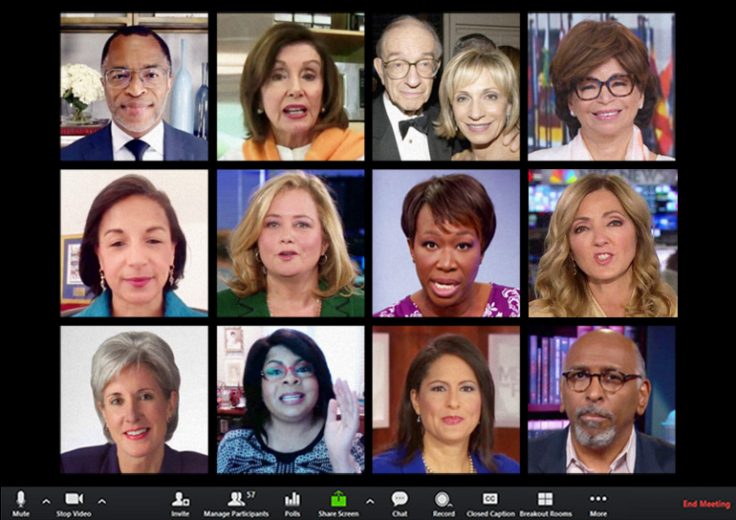The political and media professionals who populate our nation's capital don't like it when normal people use words like "swamp" and "incestuous" to describe their hometown and the lucrative industries that dominate it. It's horribly unfair to all the hardworking liberal elites who risk it all every day to shout questions at the president and draft legislation to expand tax credits for solar panels.
It would, however, be easier for swamp apologists to defend the D.C. political and media elite if they stopped behaving like incestuous swamp creatures. For example: Politico reports that a Zoom party in honor of Washington Post columnist Jonathan Capehart's birthday was attended by an array of prominent political and media professionals.
House Speaker Nancy Pelosi (D., Calif.) appeared in a prerecorded video. Other attendees included former Obama White House adviser Valerie Jarrett, NBC News chief foreign affairs correspondent Andrea Mitchell and her husband—former Federal Reserve chairman Alan Greenspan. Former Obama national security adviser Susan Rice, who is rumored to be a contender to be Joe Biden's vice presidential nominee, was another attendee.
But that wasn't all. Obama's former health secretary, Kathleen Sebelius, dialed in to the party, as did former Republican National Committee chairman Michael Steele, as did Democratic strategist Hilary Rosen, as did an array of current and former MSNBC personalities including Chris Jansing, Tamron Hall, Joy Reid, and Karen Finney, the former spokesperson for Hillary Clinton's 2016 presidential campaign.
The list goes on. Former NPR host Michele Norris and her husband, former Obama cabinet secretary Broderick Johnson, made an appearance, as did former Obama intelligence aide Jeremy Bash, CNN political analyst April Ryan, and Karine Jean-Pierre, the national spokeswoman for MoveOn.Org.
Capehart is a respected journalist whose contributions to the public discourse include several columns investigating the political opinions of his immediate family members, as well as headlines such as: "Dear white people, please read 'White Fragility,'" "What it was like to interview Tom Steyer—the day before he dropped out," "I asked Twitter to choose among the 21 Democrats. Here's what I found," and "Why the flyovers by the Blue Angels and the Thunderbirds angered me."
It would be absurd to suggest that the national media's extreme proximity to the liberal political establishment is a problem, or that it influences how stories are framed and reported. Or that their world is no less a "bubble" than the one in which they imagine conservatives and Fox News viewers to reside. Perish the thought.
